Track Status Visually With List's New Board View
Microsoft released a new way to organize content in Lists: Board View. This view allows you to see your Lists content in a board-style layout and provides a clear visual of each item's workflow stage.
Intro
Microsoft Lists is an app that helps you track information and organize work. It provides a fully customizable experience where you can edit the task fields, their layout, how they're viewed, and more. Data from Lists are stored in the associated SharePoint team site. Lists displays content using a table view (think Excel) for items and tasks. This view is great for certain use-cases such as checklists or itineraries, but not great for task management. Those wanting to use Lists for Task/Project Management turned to Planner instead. With the release of board view, Lists has become more appealing for this purpose.
Why Board View is Valuable
Board view can be preferred for a lot of reasons. The most obvious being that it’s more visually appealing than a list and allows for a cleaner organization of tasks. For example, a board view allows users to instantly view the status of different tasks without the need for a discussion during a status meeting. The more information someone can infer visually rather than consuming/discussing the information, the better off they are. This leaves space for deeper, more meaningful conversations when the work is discussed. Overall, board view is excellent for when you want to track items as you move through a process or workflow.
Creating a Board View in Microsoft Lists
Let’s take a look at how to create a board view in lists. First, you will need a list with existing data. From there, you will create a new view by selecting “Create new view” in the items menu.
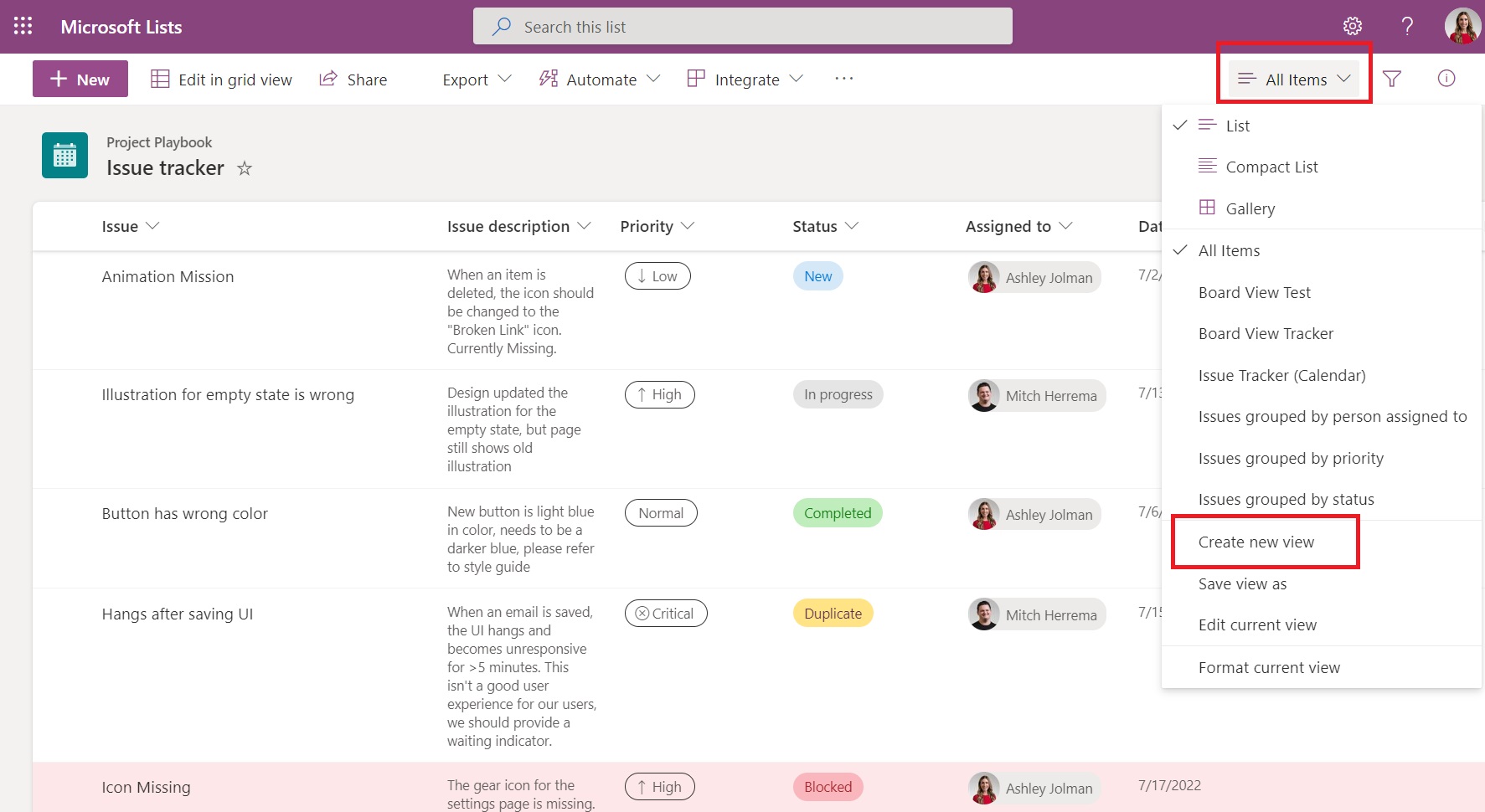

Select `Board` and name your view so that you can easily find it in the items menu in the future. Last, you’ll need to select which column you’ll want to organize your board by, this will typically be something like `status` or `priority`.
Once you’ve completed that step, simply click `create` and your new board view should display!
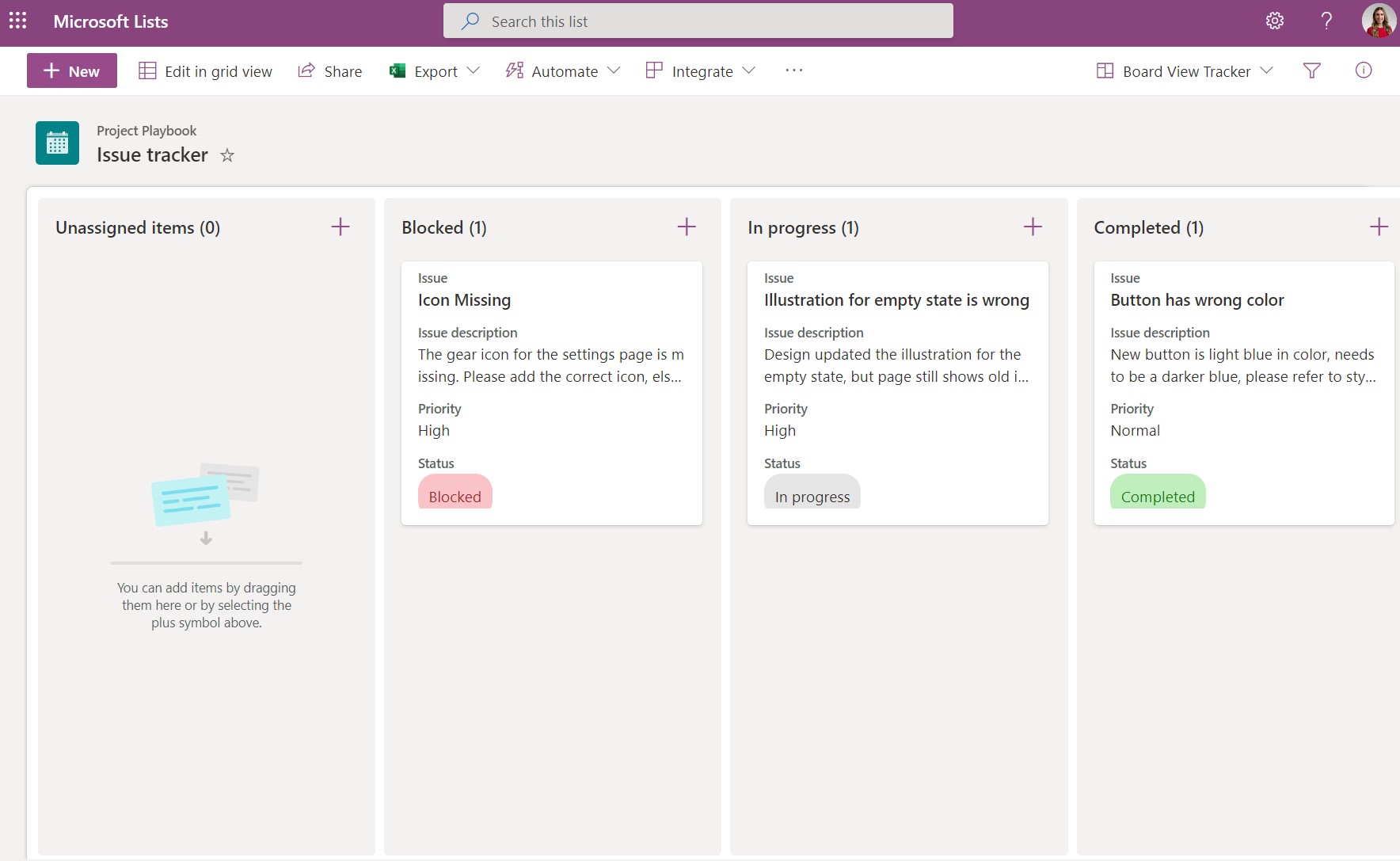
Benefits and Drawbacks
Now that we know how to create a board view, let’s talk about some of the benefits and drawbacks of this new functionality.
Benefits:
Multiple Viewing Options
Viewing data in a board view fulfills a use case that used to not be available in Lists. Adding this view adds to the list of available views in Lists for your content, so that you can find what works best in any scenario. Not only do you have multiple options, it’s quick to jump between them once created. A user can take the same set of data and quickly switch between list, board, calendar, and more custom views.
Updating Data
A benefit I noticed while using board view in Lists is that now data can be updated by simply drag/dropping an item. A drawback of Lists before was that updating data was clunky, you either had to click `Edit in Grid View`, or open each line item and update/save from the right hand panel. While using board view, I simply drag and drop the card to the appropriate column, and the field for that column automatically updates.
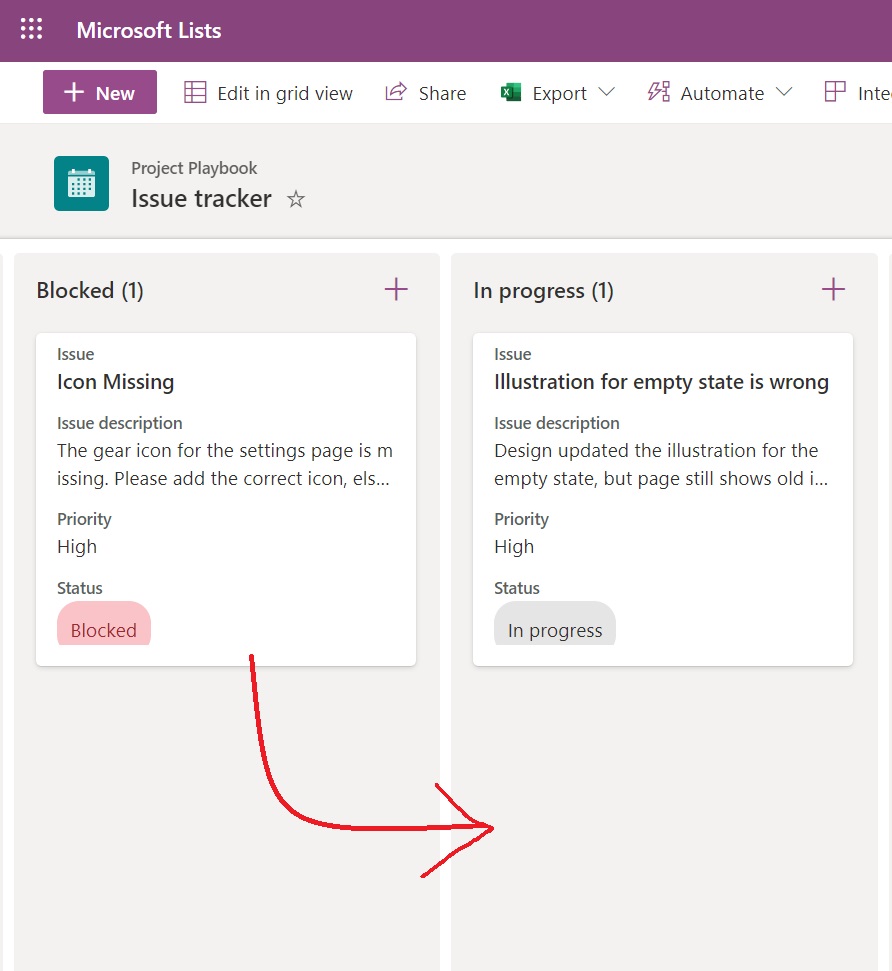

Customization
Board view allows you to customize what information is displayed on the card. Simply click `Customize Card` when viewing all your views, and you’re presented with full control of what is shown on your cards.
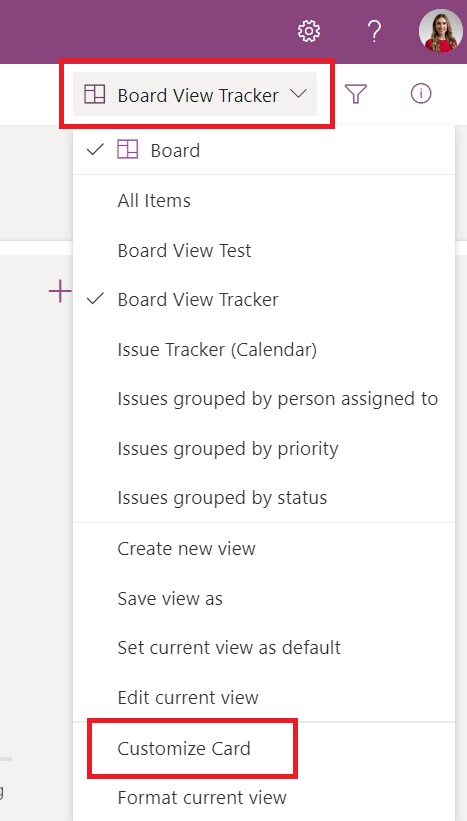
Drawbacks:
List First
You still need to create a list first. There’s no ‘quick-start’ format for a board view, where you start with the board and build out your data from there. As I mentioned above, I don’t find the experience of adding content into Lists to be very seamless so I don’t like that I must enter it this way first before I can change my views.
Can’t Reorder Cards
While in the board view, I’m unable to move cards up and down to reorder them within their column. The cards order is essentially static, I can only move them horizontally across columns. I like ordering cards while in a board view to show priority, so not having the ability to quickly make that type of change is a setback. The only way to reorder cards is to go to “List Settings,” select your view, and then edit the sort.

Customization Takes Time and Set Up
Lists is fully customizable, but not out of the box. Someone will need to put the time in to have a view that works for their business purposes and functions how they desire. Everything from the board itself, to notifications, charts, and more, they’re all possible but will need to be manually set up. All of the fun capabilities of lists seem to require an ‘extra’ step in one way or another.
Is this the end of Microsoft Planner?
Because board view is so exciting for those wanting to use Lists for Task management, the question arises, can I ditch Microsoft Planner? After-all, Planner boards can be viewed as a board but not as list, whereas now Lists can be viewed as either. I wish the answer was one tool from Microsoft that encapsulated the benefits of both Lists and Planner. Unfortunately, I wouldn’t ditch Planner quite yet, as there are still benefits to using that tool in certain scenarios. Let’s run through some of the reasons you might choose one of the tools over the other.
Why You Might Choose Lists
There are a few areas where board view in lists really stands out from planner:
1. Customization
The customization capabilities in Microsoft Lists are superior to that in Planner. First of all, the amount of views. Planner limits you to board or calendar view, whereas lists offers those plus the list view. Plus, you have the ability to organize your data at a deeper level in Lists, by adding metadata that simply isn’t available in Planner. One of my favorite features is that the information that displays on the actual card is fully customizable in Lists, whereas in Planner you are extremely limited in what options you have with how the card displays. Customization is even deeper with Lists due to the strong integration with Power Automate. The integration Power Automate has with Planner feels lack luster as you can’t access all of the data and are limited in what triggers you can use. Lists, however, has been around for a long time and has deep, robust integration with Power Automate which leads to endless capabilities.
2. Security
Lists allows granular security, whereas Planner is by the M365 group in which the Planner Board lives. Therefore, anyone who has access to the Planner board also has full editing capabilities. In Lists, I can have users who are able to edit or view-only.
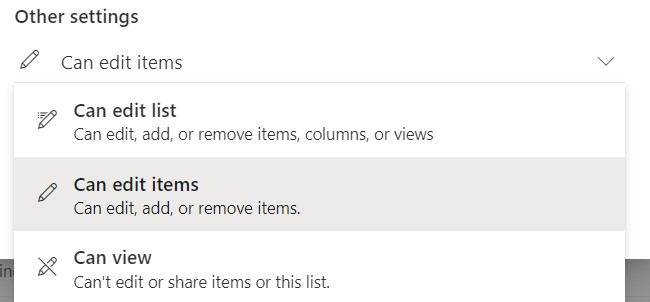
3. Version History
Plain and simple: Lists has version history and Planner does not. Have you ever been in a meeting about a project, seen a task has changed, and want to ask more information? In Planner, if someone moves a task or edits it, there really is no way to tell who made the change. Given that Planner has open security to whoever is in the O365 group, this is a definite vulnerability. Lists on the other hand, has version history, simply click the item you want to investigate and select `Version history` for a detailed report.

Why You Might Choose Planner
Don’t throw Planner out quite yet. If your business case is not complex, and you need to execute quickly, Planner is still the way to go.
Task Management
Planner integrates with other task management tools, which unlocks even more potential with managing your tasks across projects and apps. For example, the integration with Microsoft To Do allows you to see all tasks assigned to you across projects and apps in one central place. Lists lacks the ability to integrate with the other task management tools, and therefore will not show your assigned tasks from other apps nor from multiple lists.
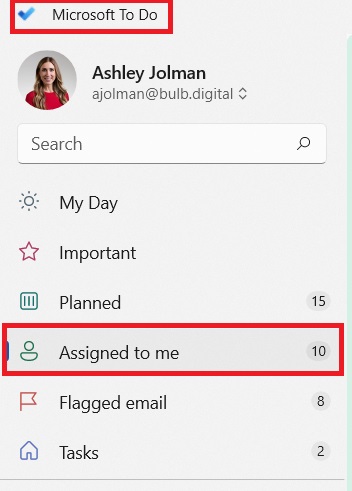
Speed
Planner is still your quickest route to a board view. With planner, you have a board view out of the box, without having to create a separate view. The cards are easily edited from the board view, which matters if you’re updating tasks on the fly. You can also reorder cards with a simple drag-and-drop, unlike the required backend settings editing in SharePoint, you’d have to complete for your cards to reorder in Lists’ board view. Planner is going to be your quickest execution for task management.
Charts
Planner has Charts ready-to-go on every board. Charts provide high-level reporting on your project. There are no ‘out of the box’ reporting capabilities in Lists (again, the reporting capabilities are deep if you use Power Automate, but that requires manual creation). Charts in Planner are very useful for quick status updates on your project overall. Having these readily available keeps Planner at a very low-barrier-to-entry for project management.
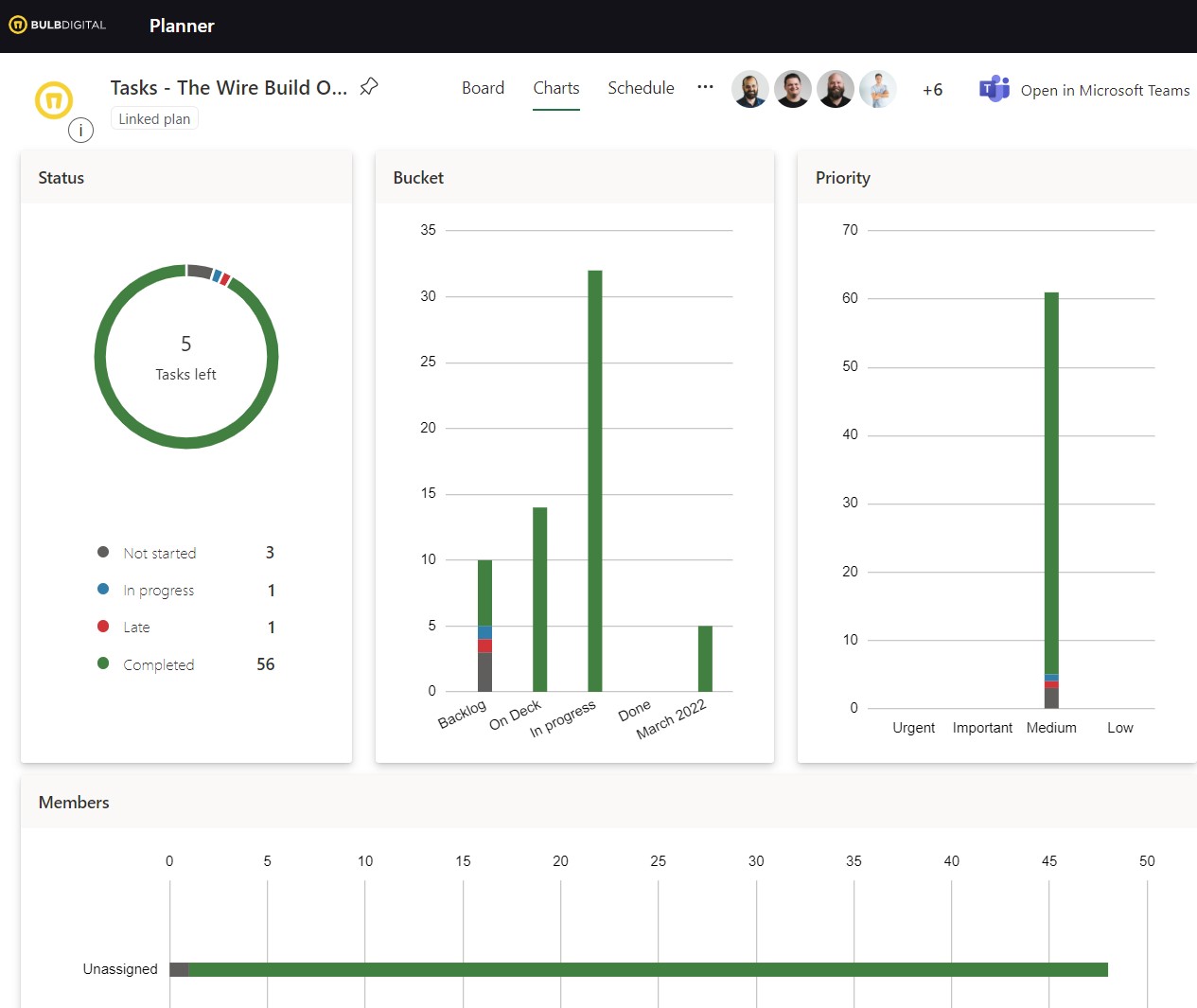
At the end of the day, the tool you’ll want to do is the one that works best for your use-case. If you have complex business requirements or customization needs, Lists is the way to go. If you need a quick task management tool for simple task tracking and collaboration with your team, Planner is still very valuable. I suggest playing around with to see which one works best for your needs.
Conclusion
Task management and keeping work visible is the key to an efficient and effective workflow. This is why I love board views and am excited to use a new tool for this purpose. There are a number of pros to Board view in Lists, and if Microsoft can address the cons, we’ll be one step closer to resolving confusion when determining “which tool to use when.”


Is Team Communication Holding You Back?
Find Out in Just 2 Minutes.
Take our quick scorecard to uncover communication gaps and hidden barriers within your team.




.jpeg)









